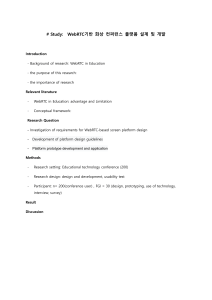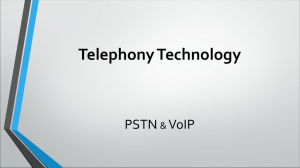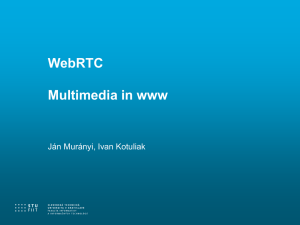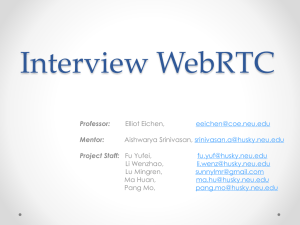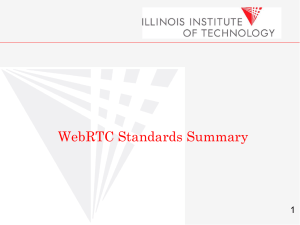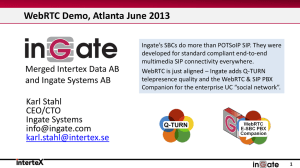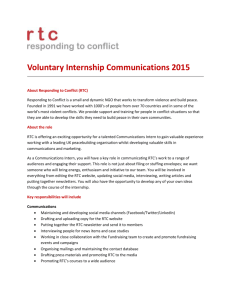STIDOLPH-WebRTC-vs.-VoIP - IIT Real
advertisement
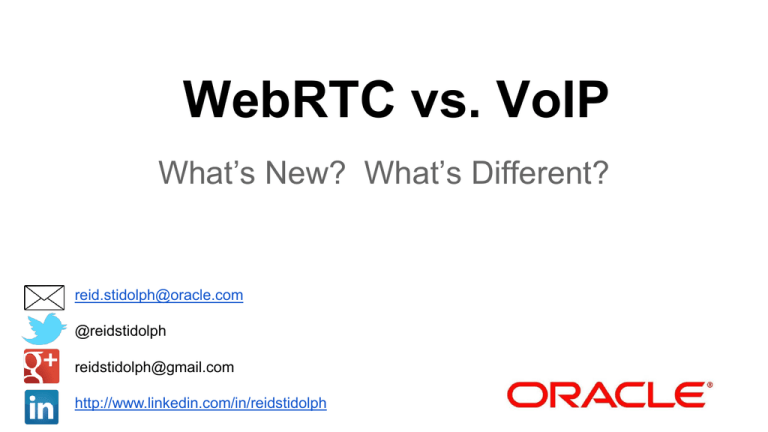
WebRTC vs. VoIP What’s New? What’s Different? reid.stidolph@oracle.com @reidstidolph reidstidolph@gmail.com http://www.linkedin.com/in/reidstidolph Overview Level-Set Similarities Technical Differences Architecture Differences Principle Differences Shifts in RTC Voice Over Internet Protocol ● “VoIP” a Broad term ● Grown to encompass multimedia, not just voice ● Diverse protocols ○ some well defined standards, some de-facto, some proprietary ● Used in a variety of networks ○ IPv4, IPv6, Public Internet, Private LANs, etc. SIP The VoIP Universe Web Real Time Communications ● Plugin-less RTC Media engine in the Browser ● Purpose built for the World Wide Web ● Collaborative W3C and IETF standardization ● RTC as a feature, not necessarily the service or application WebRTC Universe 1B devices Supported in 1Q14 User Experience Legacy 100 Years of Telco Reliable, Secure, Resilient 20 Years of Web Rich, Dynamic, Innovative VoIP and WebRTC Similarities ● Transmission of communication data between Users in real-time ● Use RTP, SDP O/A ● G.711 ● Run over IP networks Technical Divide Codecs Signaling Protocol Signaling Transport Media Description Media Transport Network IPv4 / IPv6 Architecture DB DB AS WS AS WS AS WS WS LB-L LB-G VS Internet Principle Differences Identity Telco ID Web ID User-Centric Network-Centric Identity Management WebRTC Mobility and Resilience: More Needed Web App has no control over network changes • Rehydration - automatically reestablish handover App App Failure Reconnect App lost sessions • Restore call/session after browser refresh/crash • Network handoff • Device handoff Shifts in RTC: Create and Extend RTC Extension, WebRTC enabling existing comms WebRTC as a new edge access network Network evolutions toward NFV, Telco-OTT Security, Interoperability, Reliability Advance session handling App creation toolkits for rapid service creation, prototyping Media scaling, compliance Thank You! reid.stidolph@oracle.com @reidstidolph reidstidolph@gmail.com http://www.linkedin.com/in/reidstidolph
